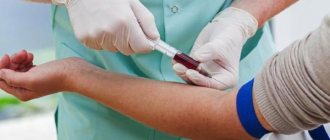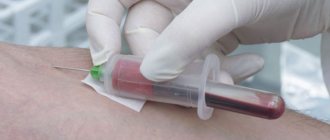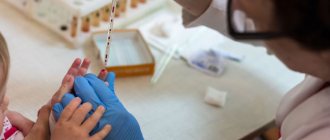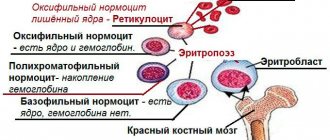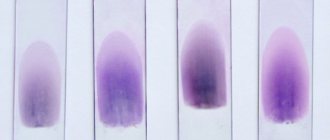DONOR DAY
- You cannot donate blood after working the night shift. A complete rest of 8 hours is required.
- The day before, at 6-7 pm, you need to have dinner, and on the day of donation - a light breakfast (sweet tea, crackers, cookies, boiled potatoes, fresh vegetables (except beets and carrots), fruits (except bananas), dried fruits (except dates). It is not recommended to come on an empty stomach!!!
- During the day you should not consume fatty, fried, spicy, smoked, salty foods, spices, dairy products, including cheeses, yoghurts, kefir, butter, eggs, avocados and alcoholic beverages.
- Immediately after donation, the donor needs to rest for 10-15 minutes.
- Remove the pressure bandage from the venipuncture site no earlier than after 2 hours.
- You cannot smoke for two hours, drink alcohol or engage in heavy physical labor.
- Driving is also not recommended due to emotional excitement.
- Alcohol abuse and an immoral lifestyle lead to the fact that the donor’s blood can become a source of disease in the recipient.
Blood donation takes place in a reclining position.
The entire procedure takes from 10 minutes to 20 minutes (plasma donation from 40 to 60 minutes) and is completely safe for health - only disposable materials are used, which are disposed of immediately after the procedure. A single dose is prescribed individually by a transfusiologist; additional blood in an amount of up to 40 ml is taken into a test tube for analysis. If you wish, you can receive test results in your hands free of charge at the address: Pobeda Avenue, 85 from 10.00 a.m. to 13.00 p.m.
List of contraindications to donating blood and its components
I. ABSOLUTE CONTRAINDICATIONS (withdrawal from donation, regardless of the duration of the disease and treatment results)
Blood-borne diseases:
- Infectious:
- AIDS, HIV carriers and people at risk (homosexuals, drug addicts, prostitutes);
- Syphilis, congenital or acquired;
- Viral hepatitis, positive test result for markers of viral hepatitis (HBsAg, anti-HCV antibodies);
- Tuberculosis, all forms;
- Brucellosis;
- Typhus;
- Tularemia;
- Leprosy;
- Parasitic:
- Echinococcosis;
- Toxoplasmosis;
- Trypanosomiasis;
- Filariasis;
- Guinea worm;
- Leishmaniasis;
Somatic diseases:
- Malignant neoplasms;
- Blood diseases;
- Organic diseases of the central nervous system;
- Complete absence of hearing and speech;
- Mental illnesses;
- Drug addiction, alcoholism;
- Cardiovascular diseases:
- Hypertension stage II–III;
- Cardiac ischemia;
- Atherosclerosis, atherosclerotic cardiosclerosis;
- Obliterating endarteritis, nonspecific aortoarteritis, recurrent thrombophlebitis;
- Endocarditis, myocarditis;
- Heart disease;
- Bronchial asthma;
- Bronchiectasis, pulmonary emphysema, obstructive bronchitis, diffuse pneumosclerosis in the stage of decompensation;
- Achilles gastritis;
- Peptic ulcer of the stomach and duodenum;
- Chronic liver diseases, including those of a toxic nature and unknown etiology;
- Calculous cholecystitis with repeated attacks and symptoms of cholangitis;
- Cirrhosis of the liver;
- Diffuse and focal kidney damage;
- Urolithiasis disease;
- Ozena;
- Other acute and chronic severe purulent-inflammatory diseases;
- Residual effects of uveitis (iritis, iridocyclitis, chorioretinitis);
- High myopia (6 D or more);
- Trachoma;
- Complete blindness;
- Common skin diseases of an inflammatory and infectious nature;
- Generalized psoriasis, erythroderma, eczema, pyoderma, sycosis, lupus erythematosus, blistering dermatoses;
- Fungal infections of the skin (microsporia, trichophytosis, favus, epidermophytosis) and internal organs (deep mycoses);
- Pustular skin diseases (pyoderma, furunculosis, sycosis);
II. TEMPORARY CONTRAINDICATIONS
| Name | Deadline for withdrawal from donation |
| 1. Factors of infection with blood-borne diseases: | |
| 1.1. Transfusions of blood and its components (with the exception of burn convalescents and persons immunized to the Rh factor) | 6 months |
| 1.2. Surgical interventions, incl. abortions (a medical certificate is required) (extracts from the medical history) on the nature and date of the operation) | 6 months from the date of surgery |
| 1.3. Getting a tattoo or acupuncture treatment | 120 calendar days |
| 1.4. Staying on business trips abroad for more than 2 months | 6 months |
| 1.5. Stay in malaria-endemic countries with tropical and subtropical climates (Asia, Africa, South and Central America) for more than 3 months | 3 years |
| 1.6. Contact with patients with hepatitis: | |
| - hepatitis A | 3 months |
| - hepatitis B and C | 1 year |
| 2. Past diseases: | |
| 2.1. Infectious diseases not listed in the “Absolute contraindications” section: | |
| - history of malaria in the absence of symptoms and negative immunological test results | 3 years |
| — typhoid fever after recovery and a full clinical examination in the absence of pronounced functional disorders | 1 year |
| - sore throat, flu, ARVI | 1 month after recovery |
| 2.2. Other infectious diseases not listed in the section “Absolute contraindications” and clause 2.1 of this section | 6 months after recovery |
| 2.3. Tooth extraction | 10 days |
| 2.4. Acute or chronic inflammatory processes in the acute stage, regardless of location | 1 month after relief of the acute period |
| 2.5. Vegetative-vascular dystonia | 1 month |
| 2.6. Allergic diseases in the acute stage | 2 months after relief of the acute period |
| 3. Pregnancy and lactation period | 1 year after birth, 3 months after the end of lactation |
| 4. Menstruation period | 5 days from the end of menstruation |
| 5. Vaccinations: | |
| - vaccination with killed vaccines (hepatitis B, tetanus, diphtheria, whooping cough, paratyphoid, cholera, influenza), toxoids | 10 days |
| - vaccination with live vaccines (brucellosis, plague, tularemia, BCG vaccine, smallpox, rubella, oral polio), administration of anti-tetanus serum (in the absence of pronounced inflammatory phenomena at the injection site) | 1 month |
| - administration of immunoglobulin against hepatitis B | 1 year |
| - vaccination with rabies vaccine | 2 weeks |
| 6. Taking medications: | |
| - antibiotics | 2 weeks after the end of treatment |
| - analgesics, salicylates | 3 days after the end of treatment |
| 7. Drinking alcohol | 48 hours |
| 8. Changes in biochemical blood parameters: | |
| - increase in alanine aminotransferase (ALT) activity by less than 2 times | 3 months |
| - repeated increase or increase in ALT by 2 or more times | removal from donation and referral for examination |
| — dysproteinemia | 1 month |
Note:
If the donor has diseases not included in this List, the issue of admission to donation is decided by a commission by a transfusiologist and the relevant specialist(s).
Intervals between different types of donation (in days)
| Initial procedures | Subsequent procedures | ||
| Blood giver | Plasmapheresis | Thrombocytapheresis | |
| Blood giver | 60 | 30 | 30 |
| Plasmapheresis: dose 250–300 ml dose 500–650 ml | 7–14 14 | 7–14 14 | 7–14 14 |
| Thrombocytapheresis | 14 | 14 | 14 |
After donating blood, go to the cash desk to receive a payment for food, the amount of which is established in accordance with: Federal Law-125 dated June 20, 2012 “On the donation of blood and its components” and Resolution of the Cabinet of Ministers of the Republic of Tatarstan dated June 5, 2014 No. 379 “On supporting blood donation in the Republic of Tatarstan "
How long does this procedure take?
Whole blood collection takes 8-10 minutes. The process, called apheresis, takes longer - usually about 1.5-2 hours. Apheresis
is the process of filtering out certain components of donor blood, such as:
- platelets
- plasma
- red blood cells
- some white blood cells, such as lymphocytes
The exact timing of each of these procedures will vary. With both types of donation, you also need to take into account time to fill out paperwork and time to rest to recover.
(according to Article 186 of the Labor Code of the Russian Federation):
- On the day of donation of blood and its components, as well as on the day of the associated medical examination, the employee is released from work.
- If, by agreement with the employer, the employee went to work on the day of donating blood and its components (with the exception of heavy work and work with harmful and (or) dangerous working conditions, when the employee’s going to work on this day is impossible), he is provided with his desire is another day of rest.
- In the case of donating blood and its components during the period of annual paid leave, on a day off or a non-working holiday, the employee is given another day of rest at his request.
- After each day of donating blood and its components, the employee is given an additional day of rest. The specified day of rest, at the request of the employee, can be added to the annual paid leave or used at other times within a year after the day of donation of blood and its components.
- When donating blood and its components, the employer retains for the employee his average earnings for the days of donation and the days of rest provided in connection with this.
DIET AFTER DONATION
For the speedy and complete restoration of blood composition, the donor is recommended to consume foods containing proteins, iron and calcium.
Proteins:
- milk and dairy products - kefir, sour cream, cottage cheese, cheeses (animal proteins),
- meat and meat products, poultry, eggs, fish and seafood (animal proteins),
- beans, peas, soybeans, lentils, corn (vegetable proteins).
Iron:
- buckwheat,
- lentils,
- parsley,
- spinach,
- apples,
- grenades.
What is plasma?
Let's figure out what plasma is.
Plasma is the liquid part of the blood and makes up the majority of it. More precisely 60%. The plasma may be transparent or have a slightly yellowish tint. A person who eats a lot of fatty foods has cloudy plasma.
The main task of plasma is to transport blood cells and nutrients. Its main part consists of water, but in addition to this, plasma contains the following elements:
- Protein
- Amino acid
- Glucose
- Enzymes
- Hormones
- Minerals
8% of plasma is proteins. They ensure the salt balance of the body, have a positive effect on the functioning of the immune system, and take part in metabolic processes.
The use of plasma is very popular in medicine. It is administered when the patient is in shock, has suffered large blood loss, has poor blood clotting, and has cardiomyopathy.
Why isn't it harmful?
As you know, no more than 450-500 ml can be taken from a donor at a time, which does not have any negative effect on the body. Moreover, the law establishes the frequency of testing: for women no more than 4 times a year, for men no more than 5 times. The interval between procedures when donating whole blood should not be less than two months. If you donate plasma, then for at least one month.
The human body is capable of self-healing. The volume that is donated in one procedure is replenished without consequences in two weeks or a month, which is why you cannot donate more often. If a person comes to the transfusion point for the first time, they may take half the norm.
Possible harm
Most doctors claim that donation is good for the health of the person donating blood, and there is no question of any harm, as long as there are no contraindications and all the rules for donation are followed. The only disadvantages could be considered a minor wound from an injection on the arm and the time spent. This is where the so-called harm ends, the rest is benefit.
There is an opinion that regular donation changes metabolism, and a person cannot do without it, otherwise his health may worsen.
